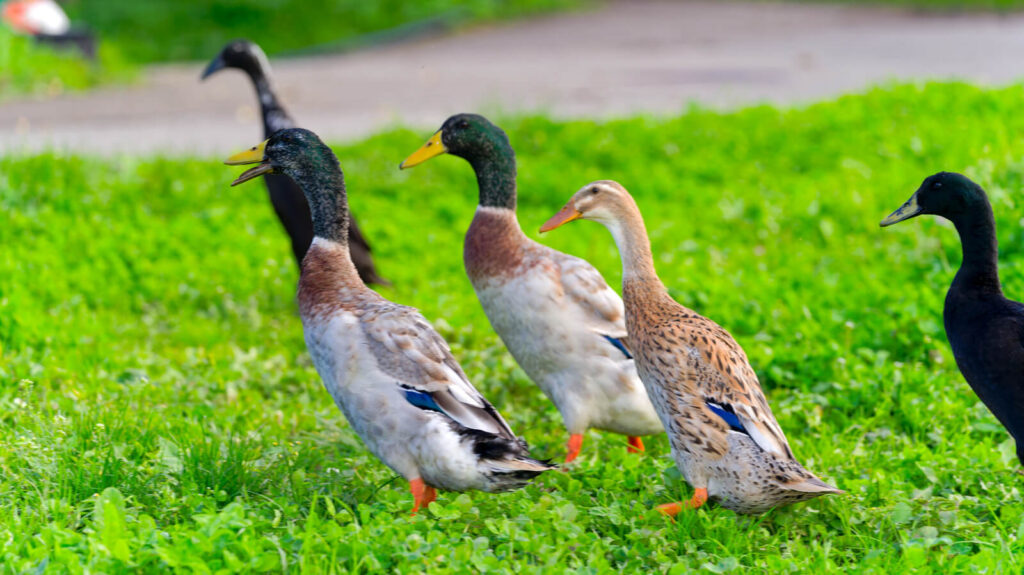Indian Runner Duck

Scientific Name
Anas platyrhynchos domesticus
Alternative Names
Runner Duck, Penguin Duck (historically), Baly Soldier
Measurements:
| Feature | Male | Female |
|---|---|---|
| Height | Up to 76 cm (30 in) | Around 50–60 cm (20–24 in) |
| Weight | 1.8–2.3 kg (4–5.1 lb) | 1.4–2 kg (3.1–4.4 lb) |
| Egg Production | 173–250+ eggs per year | — |
Status
Domesticated breed originally from Indonesia (Java, Bali, Lombok). Now kept worldwide for eggs, pets, and ornamental use.
Identification
Indian Runners are famous for their upright, penguin-like posture. Instead of waddling like most ducks, they walk or run due to their pelvic bones being positioned further back. They have long, slim bodies, long necks, and a smooth, straight head shape. Plumage comes in many colors—such as fawn, white, black, chocolate, or penciled.
Voice
Females are quite vocal with typical loud quacks. Males are quieter with soft, raspy sounds.
Diet
They eat grass, grains, insects, small invertebrates, and love foraging in rice fields. They are excellent natural pest controllers.
Distribution
Originally from the Indonesian islands of Bali, Java, and Lombok. Now found on farms, homesteads, and backyard flocks around the world.
Habitat
Domesticated, but thrive in areas with open land, rice paddies, ponds, and grassy fields. They prefer land more than deep water.
Breeding
Highly productive egg layers. A healthy female can lay 173 to over 250 eggs per year. Eggs are usually white or light green. They rarely go broody, so eggs are often hatched using incubators or broody ducks.
Wintering
Do not migrate. They handle mild cold but need shelter in freezing weather due to their slender bodies and lack of heavy feather insulation.
Conservation
Not endangered. Widely kept, but pure bloodlines and traditional colors are preserved by dedicated breeders.
